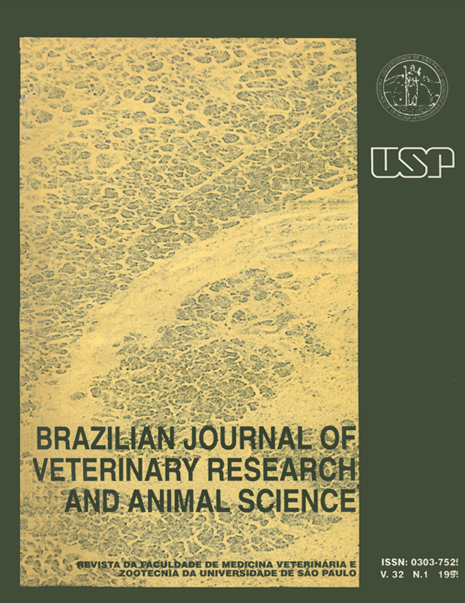Experimental evaluation of brain spect using d,1 -HMPAO99mTc in dogs. Anatomo-physiological implications
DOI:
https://doi.org/10.11606/issn.1678-4456.bjvras.1994.52081Keywords:
Brain "SPECT", 99mTc-HMPAO, Dog, Anatomo-physiological implicationAbstract
Technetium-99m-d,1-hexamethylpropyleamine oxime (99mTc-HMPAO) is an important radiopharmaceutical used for both brain SPECT imaging and "in vitro" labelling of white blood cells. An increasing utilization of this radiopharmaceutical for studies of several neurologic and psychiatric diseases in humans, lead us to the preparation of the kits of HMPAO to be labeled with technetium-99m. This paper presents animal experimental studies with d,l-HMPAO99mTc prepared from liofilized kits developed in our laboratories and also comparison to those commercially available. The brain scans have been done initially in rabbits, however better results were obtained with dogs. Six mongrel dogs clinically qualited as normals, were used in order to get scintigraphic brain pictures and washout curves of region of interest (ROIs). The value of experimental studies in animals and the considerable reduction in price of the so obtained radiopharmaceutical, have shown the viability of such procedure in the clinical practice as well in the veterinary clinic of small animals. By the other side, the perfusion of d,l-HMPAO99mTc showed that such a product concentrates at the same time in the cerebral area and nasal fossa, showing evidence of similar structures as the hemato encephalic barrier, also in the nasal area.
Downloads
Downloads
Published
Issue
Section
License
The journal content is authorized under the Creative Commons BY-NC-SA license (summary of the license: https://





